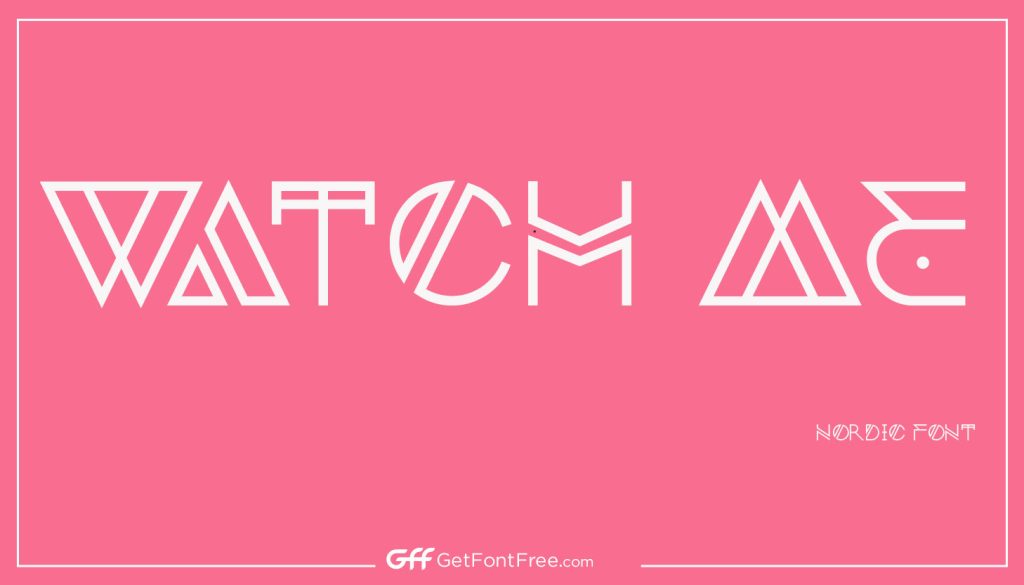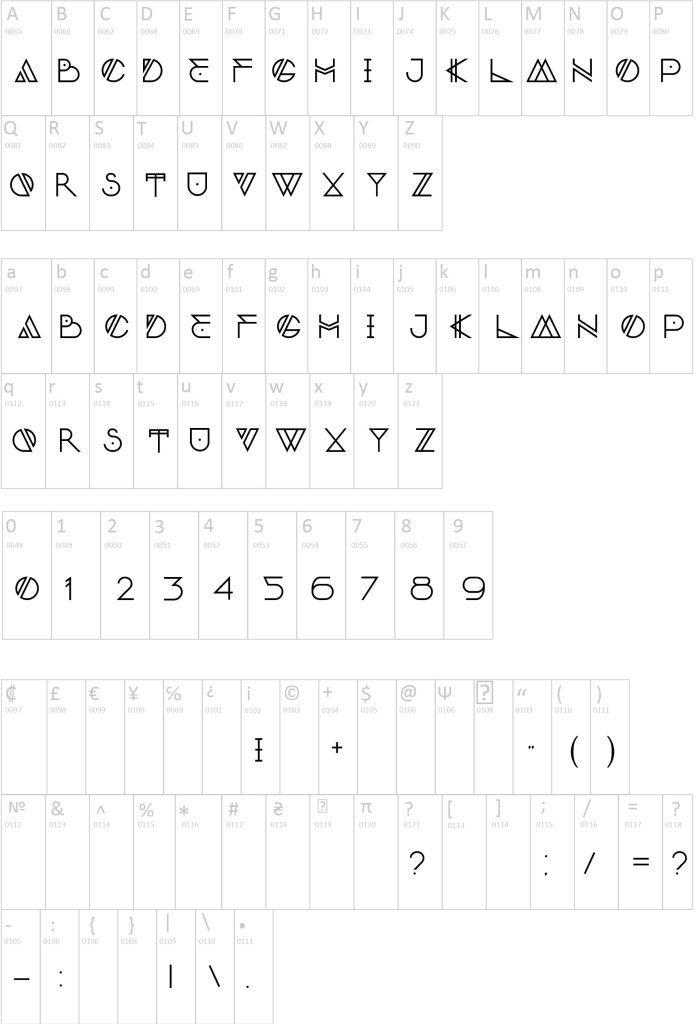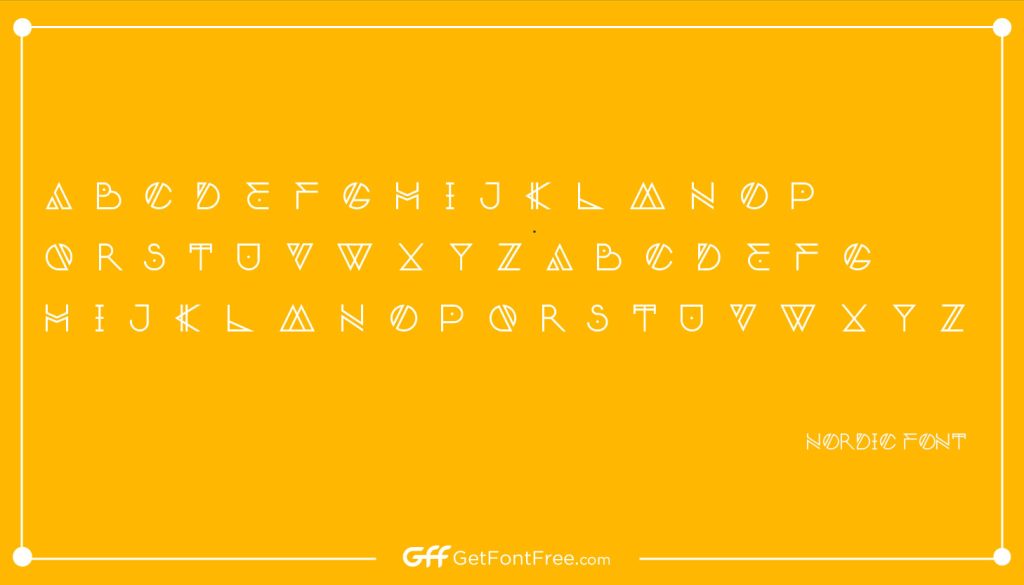The Nordic font is a typeface that is inspired by the lettering styles of the countries in the Nordic region, which includes Denmark, Finland, Iceland, Norway, and Sweden. It is characterized by its clean and modern design, with strong geometric shapes and a focus on legibility. The font is often used in branding and design projects that have a Scandinavian aesthetic. Some examples of popular Nordic fonts include Futura, Helvetica, and Akzidenz-Grotesk.

Nordic Font Information
| Name | Nordic Font |
| style | Geometric |
| File Formate | OTT, TTF |
| License | Free for personal/commercial |
Reason to Use Nordic Font
There are several reasons why someone might choose to use a Nordic font in their design work:
- Aesthetic appeal: Many people find Nordic fonts to be visually appealing and well-designed, making them a good choice for a wide range of projects.
- Regional significance: If you are designing materials for a business or organization that is based in a Nordic country, using a Nordic font can be a way to connect with local audiences and add a sense of regional authenticity to your work.
- Branding: If you are creating a brand identity for a business or organization, using a unique and distinctive font can be a good way to set your brand apart and make it more memorable. Nordic fonts can be a good choice for this purpose, as they are not as commonly used as some other font styles.
- Functionality: Some Nordic fonts are designed specifically for use in particular languages or scripts, and may include features like special characters or diacritics that make them more suitable for use in those languages.
Nordic Font Family (Includes Total of Typefaces)
- Akkurat: This is a sans-serif font that was designed by Swiss type designer Laurent Kurst-Switzer in 2004. It has a clean, modern aesthetic and includes multiple weights and styles.
- FF Meta: This is a sans-serif font that was designed by Erik Spiekermann in 1991. It has a highly legible and versatile design and includes multiple weights and styles.
- Futura: This is a geometric sans-serif font that was designed by Paul Renner in 1927. It has a clean, modern design and is widely used in a variety of contexts.
- Helvetica: This is a sans-serif font that was designed by Max Miedinger in 1957. It has a clean, neutral design and is widely used in corporate branding and other contexts.
- Proxima Nova: This is a sans-serif font that was designed by Mark Simonson in 2005. It has a clean, modern design and includes multiple weights and styles.
Character Map

Alternatives of Nordic Font
Here are a few alternative font families that you might consider if you are looking for a different aesthetic or feel to your design work:
- Gothic fonts: Gothic fonts are characterized by their heavy, decorative strokes and are often associated with medieval or traditional design styles. Examples include Blackletter and Fraktur.
- Slab serif fonts: Slab serif fonts have thick, block-like serifs and are often used for headlines or other prominent text. Examples include Rockwell and Courier.
- Script fonts: Script fonts are characterized by their cursive or handwritten appearance and are often used for more formal or elegant design projects. Examples include Brush Script and Lucida Handwriting.
- Sans-serif fonts: Sans-serif fonts are characterized by their lack of serifs and are often used for more modern or minimalistic design projects. Examples include Arial and Calibri.
- Decorative fonts: Decorative fonts are characterized by their highly ornamental or stylized design and are often used for more creative or artistic projects. Examples include Chalkduster and Papyrus.
License Information
The specific license terms for a Nordic font will depend on the font in question and the terms of use set by the font’s creator or distributor. Some fonts are available for free commercial use, while others may require a license fee or other restrictions on usage. It is important to carefully review the license terms for any font that you plan to use in your design work to ensure that you are using it in compliance with the terms of the license.
In general, it is a good idea to use fonts from reputable sources, as this can help ensure that the fonts are of high quality and that you are using them legally. Some sources of fonts that offer clear and reliable licensing terms include commercial font foundries, open-source font projects, and online font marketplaces.
Supported Language
There are several font families that support the Nordic languages, which include Danish, Norwegian, Swedish, and Finnish. Some examples of font families that include support for these languages include:

- Arial
- Calibri
- Cambria
- Consolas
- Courier New
- Georgia
- Times New Roman
- Verdana
These fonts should have the necessary characters and diacritics to properly display text in Nordic languages. It’s worth noting that some specialized font families may also have better support for certain language features, such as the inclusion of additional characters or alternate glyphs.
FAQs
What are some common font families that support the Nordic languages?
Some common font families that support the Nordic languages include Arial, Calibri, Cambria, Consolas, Courier New, Georgia, Times New Roman, and Verdana.
Are there any specialized font families that have better support for the Nordic languages?
There may be some specialized font families that have better support for certain language features of the Nordic languages, such as the inclusion of additional characters or alternate glyphs. It’s worth doing some research to find a font that is specifically tailored to your needs.
Can I use a font that doesn’t support Nordic languages to type in these languages?
It is generally not recommended to use a font that does not support the Nordic languages to type in these languages. The characters and diacritics may not display correctly, which can make the text difficult to read.
How can I find out if a font supports the Nordic languages?
One way to find out if a font supports the Nordic languages is to look at the character set for the font. This will typically list all of the characters and symbols that are included in the font. If the characters and diacritics for the Nordic languages are present, then the font should support these languages.

